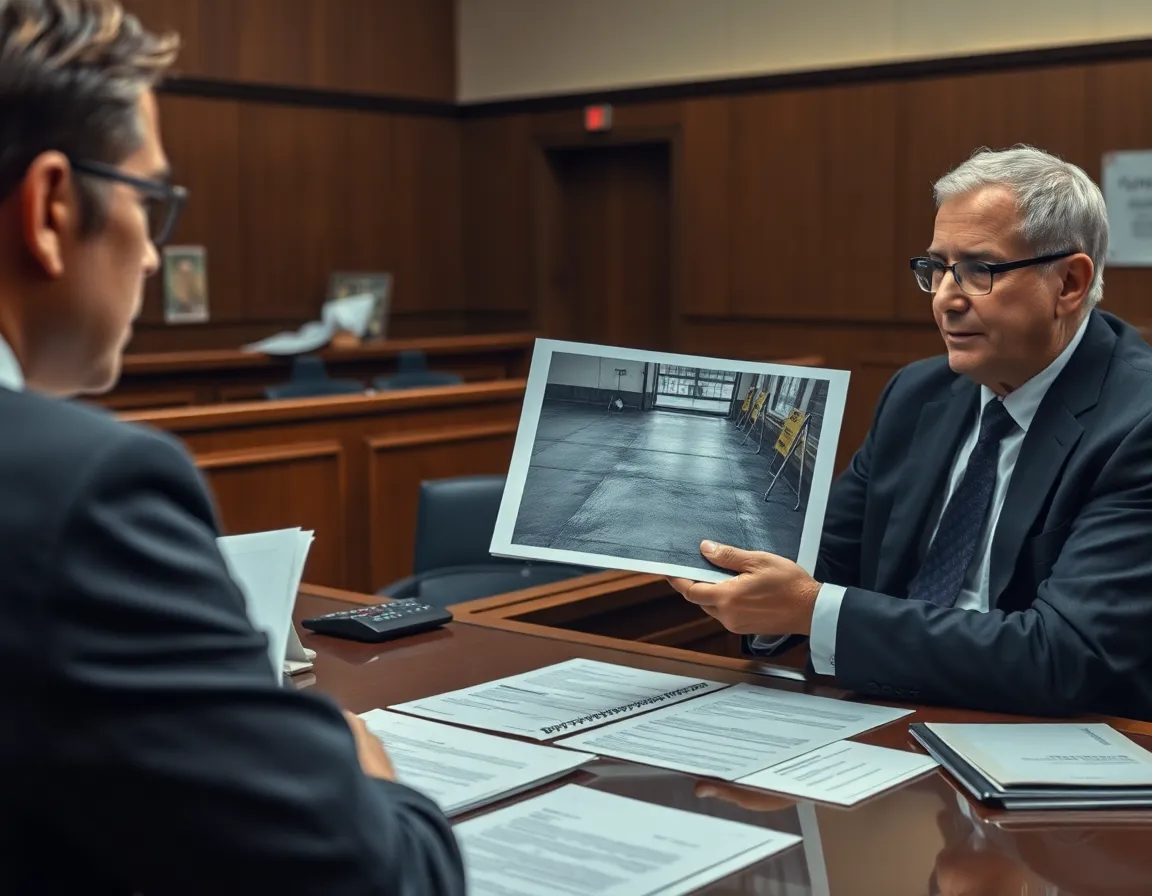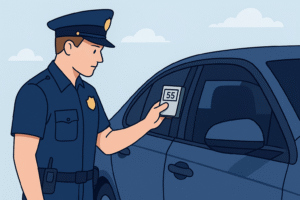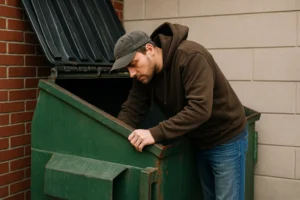What Is Negligence in Slip and Fall Cases?
Slip and fall negligence means that somebody was hurt because the owner of a property neglected to leave a safe environment. In order to precede with a beneficial case, the victim (plaintiff) has to show that the owner of the property was negligent and did not make reasonable effort in avoiding a dangerous situation.
Examples of activities that may result in slip and fall negligence claims in the personal injury legislation of a lawsuit include the case of an individual slipping on wet floors, uneven pavements, and ice slippery surfaces. The nuance of the argument is that the owner was aware, and must have been aware, of the danger and did not take the necessary steps. Negligence is in this failure to act.
What Do You Need to Prove Negligence?
In order to prove negligence of the slip and fall case, there are four legal elements that need to be fulfilled: duty, breach of duty, causation and damage. These are the foundations of any negligence case and they are supposed to be demonstrated by credible evidence and legal rationalizations.
First, you should demonstrate that the owner of the property was legally due to preserve a safe environment (duty of care). Second, you should prove that the duty was violated because a known hazard was not dealt with. Third, you should be able to connect your injury to the negligence of the property owner ( causation). Finally, you must prove that you have actual damages; that is, you have been injured medically (the cost of treatment) or you have lost wages (past damages).
Steps to Proving Negligence After a Fall
Negligence is proven in a strategic manner. At the very instance of the fall, you must collect evidence, report to the property owner or manager, and obtain medical help. A good documentation at the outset helps to reinforce your case.
Once the preliminary evidence has been gathered and medical help obtained, it is advisable to move further along the process of contacting a personal injury attorney with experience on issues relating to slip and fall. A lawyer would be able to advise you on how to save evidence, negotiates with insurance companies, and how to submit your claim in time. They can also serve a preservation letter to make sure that the property owner is not going to destroy video footage or other types of documentation.
Then the scene of the accident ought to be explored in order to collect video surveillance (when possible), interview witnesses, and review the advice of experts like accident reconstructionists or safety professionals. Such actions will contribute to the development of solid grounds of negligence evidence and precondition the successful recovery of your case either in settlement or litigation.
Common Evidence Used in Slip and Fall Claims
A person should gather the appropriate evidence to prove the negligence in a slip and fall case successfully. The greater amount of documentation you possess, the better is your case, particularly in terms of proving that the property owner was aware of the hazard or did not take appropriate measures about it. It includes the most common types of evidence, which are divided according to certain categories:
Photographic and Video Evidence
A photo at the scene of the accident, particularly those that are taken right after the fall can document the dangerous conditions such as water spillage or breakages on the floor, bad lighting, among others that can lead to an accident. The security cameras and other video footage may give the definite evidence of the duration of a hazard existence as well as the possibility of negligence on the part of staff employees.
Medical Records and Doctor’s Notes
Medical reports do not only record your injury, but they put in place a time line. These records are necessary in directly relating the fall with your medical condition. Hospital bills, X-rays and notes given by doctors can also be a confirmation of damages and seriousness of the harm.
Scene Incident Reports
In case you tripped and fell in the shop, at work, or in the street, usually, there is a procedure of filing a report. The accident can be proved and the time when it is reported by the use of an official incident report which is filed by the business or the property manager.
Witness Testimonies
Such witnesses, who have seen the ways you fell or note the dangerous situation before or after the incident can give a significant testimonial. Their testimonies will provide support to your allegations and give an unbiased opinion to what occurred.
Maintenance Logs & Safety Reports
Both business or housing estate owners may maintain records of check ups. These records can become an effective weapon in demonstrating negligence in case these documents indicate that the property was not maintained or did not undergo any kind of inspection.
Expert Testimony
Safety specialists or accident reconstruction experts in some instances are brought in to examine the scene. Their expert views can be used in your case to ensure that it was unsafe and not abiding by the safety standards.
Negligence Slip and Fall Settlements
The average in negligence slip and fall settlement is usually determined by the level of the injury, the negligence level, and the support that is present. Compensation may be in form of property that may cover medical claims, lost wages, pain and torment, and any other out-of-pocket claims.
Most of the cases are between the attorneys or insurance adjusters leading to a settlement without trial. But when the sides are not able to reach an agreement about just compensation, then the case might be brought to the court. It is important to know how strong your case is and the worth of your evidence of negligence in an attempt to exercise the best negotiation in terms of settlement.
Examples of Real Slip and Fall Negligence Cases
Various examples of real life cases reveal that victims were able to establish negligence in slip and fall cases. As an example, one of the most popular cases was the case of a woman who fell and broke her nose when spilt detergent made her fall in a grocery store. Recklessness was established in the store since the monitoring revealed that after the spillage, workers would pass by without cleaning up.
The other is the case of a tenant who slipped in the icy steps of a house complex. The landlord did not salt though he knew that a snowstorm occurred the previous night. The cases were decided in favor of the tenant who argued that the landlord violated his or her responsibilities by not providing safe common areas. These examples explain what is necessary to discuss negligence and how the duty and liability are perceived by the courts. visit website for more.





